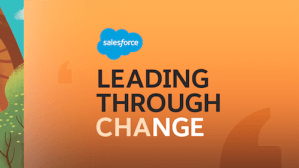Whether it’s a global issue like COVID-19 or a local emergency, businesses must have a crisis communication plan in place for their customers. This goes beyond minor adjustments to marketing messages. The plan must extend to customer service teams, your website, social channels, customer-facing staff, and more.
While we often can’t control the societal crisis at hand, we can control our response to it.
Here are five tips to help you formulate a plan that communicates the impact of a situation and next-steps to your customers.
-
Show that you care. People seek connection during times of uncertainty. Companies in our communities play a role in this. Consider a message to customers to show you’re aware of the issue and offer helpful resources. Social media, email, or your online community are particularly accessible mediums for a brief and immediate message.
-
Be proactive in your communications. Your customers count on you even more than usual during a crisis. Proactively announce changes or impacts to your business. Do not make customers hunt for the information they need – instead, bring it to them. Proactive communication will free up staff to focus on tasks other than answering the same customer questions over and over again.
Create communication that is appropriate within a variety of channels, including email, SMS, push notifications, social, IVR systems, chatbot introductions, homepage modals, and headers, and dedicated web landing pages. Establish a parallel approach designed to inform customers and employees in equal measure as appropriate.
-
Offer a shoulder to lean on. Show your humanity with an authentic, sensitive response. For example, Walgreens and CVS are waiving prescription medicine delivery fees during the novel coronavirus pandemic. Small businesses are also stepping up. I received an email from my local deli offering free delivery for customers over the age of 70 within a five-mile radius of the business. Their message also directs recipients to share the email with “friends and family who may like having food delivered to avoid going out.”
-
Inspire your audience. In times of need, those who are not affected are often in a position to assist others. You can be a catalyst by allowing corporate citizenship to shine. Do all you can to help. Share a donor portal; communicate your philanthropic position; assist with collection coordination; donate products, services, money, or time; and communicate how your brand’s community can get involved.
-
Audit your content queue. Review your entire messaging stream, including social media, promotional and transactional emails, push notifications, and SMS, to identify communications that need to pause or shift as a result of the situation. Otherwise, there is a risk of damaging your brand if a message comes off as insensitive, incorrect, or seeking to capitalize on a tragedy.
These communications must be a company-wide effort. Develop a cross-functional “Go Team” with experts from public relations, social, email, mobile, website, design, data/IT, philanthropy, stores/field, logistics, supply chain, and customer service to coordinate teams and efforts.
Then, create a plan that documents responsibilities throughout the organization as they relate to customer-facing communications. Establish a crisis strategy and craft templates for communications. And if there’s time, do a practice run to make sure your plans and strategies are sound.
The US Department of Homeland Security shares key resources for preparedness, response, and recovery. Take these resources and extend them into your communications as well to your design. This will allow you to be agile while supporting your customers during a time of need.
Our Leading Through Change series provides thought leadership, tips, and resources to help business leaders manage through crisis. Check out some of our most recent articles:
-
Here are five ways we’re helping our employees navigate work now
-
We’re helping businesses manage through crisis
-
See how we pivoted a live event into an online experience

























